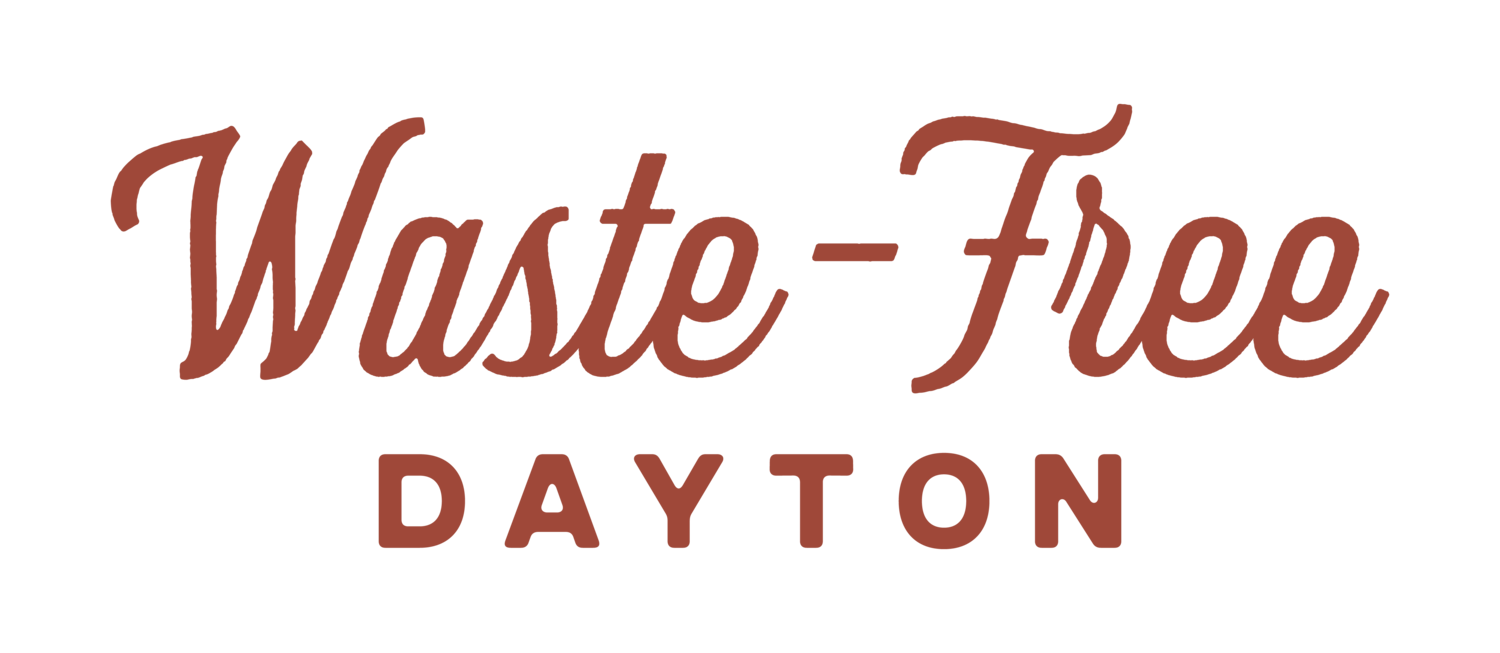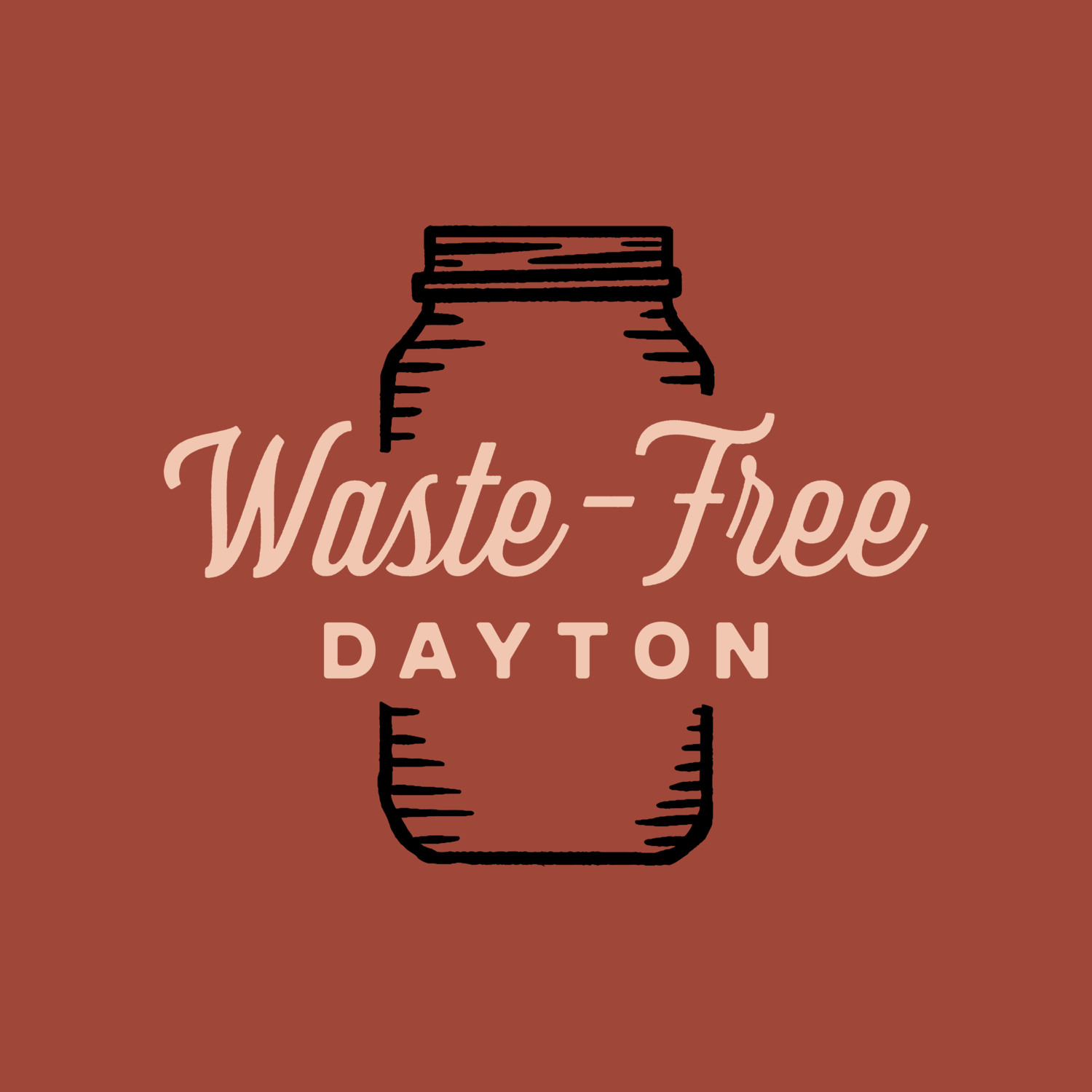Humans of Waste-Free Dayton: Charlie Greene
We have another Humans of WFD for you, and this month it is Charlie Greene.
Charlie is a local entrepreneur and advocate for native plants, selling plants through his business Tadmor Greenes. He loves Dayton, and you can sometimes find him singing karaoke or presenting some of his artwork around town. Let’s hear what he has to say!
Tell us a bit about yourself, Charlie. How long have you lived in the Dayton area? What are some of your favorite parts about the city?
About me - I grew up North of Dayton in Tipp City, moved to Oregon for College, and remained out west for 15 yrs. I later moved to NYC for 5 yrs before moving back to Dayton 4 years ago. I now live in the Historic Huffman Neighborhood which is my favorite part of town. It's the first place I lived where you have a real sense of community. If problems happen they come up with solutions. For instance I had an out of town friend from Oregon who has never been to Ohio and came to Dayton for a wedding. When the flowers for the wedding showed up rotten, my neighborhood stepped up to the challenge to provide amazing flowers from their gardens, including my friend Brittany who runs Back Lot buds in St. Annes Hill. What ended up happening is creating this memorable moment of neighbors helping neighbors to make something magical happen. When they left Dayton they were left with a great memory of community and were jealous because they still haven’t met their neighbors in Seattle.
What is your favorite food or dish?
Anything at Grist! Their octopus will amaze you!
What are some of your favorite interests?
During my down time in winter I tend to become a hermit and work on my watercolor paintings, knit, and travel. Working full time for an airline I can get anywhere in the world for free.
Charlie, what was the specific moment that caused you to be environmentally conscious?
I didn’t have a specific moment that caused me to be environmentally conscious–or it was just living out west for 15 yrs where it is a routine. The city of Portland and Seattle provide you with a tiny trash can that fits one bag of trash a week. The recycle bin is huge, and you are also provided a bin for composting your food scraps and compostable items. Every year you get free compost from the city! Every true Oregonian has brought their own grocery bags to the grocery store since the 80s and it is routine. I’ve also traveled to more than 35 countries and being in countries like Morocco, South Africa, India and Brazil out in the middle of nowhere the common thing you see is plastic bags blowing in the wind or stuck in a tree away from any city, and you see how much the use of plastic is everywhere across the globe.
You own and operate Tadmor Greenes. Can you share a bit more about that?
Tadmor Greenes is a Native plant Nursery and I started this because Ohio has a large diversity of Native plants, about 1,600 native flowering perennials and over 300 native grasses. I also see it as something that we can do individually to combat climate change and take action. I know I constantly feel lost in doomsday climate change reports and feel helpless but switching to native plants is something that is easy and truly makes positive changes for your local ecosystem. More studies are finding Native prairies might be the ultimate carbon sink behind our oceans. When a forest burns down all that carbon those trees have collected for hundreds of years is released back into the atmosphere. When a Prairie burns that carbon has already been converted into starches and sugars in our soil leaving it locked into the ground forever with incredibly healthy soil and grows back quickly to trap more carbon in our soil. That is only one benefit in a long list of benefits our plants do for us. Home Grown National Park is another good resource to dive deeper into it.
What do you tend to focus on when trying to be waste-free?
I focus on not creating more waste and making better choices that don’t adversely affect our plant. I avoid online ordering as mega warehouses usually end up being built on prairies as it's cheaper to build on new land than repurpose land already destroyed by former industrial giants.
What do you enjoy about being environmentally friendly? What do you dislike?
I enjoy my bidet which is a great environmentally positive way to not only feel good about yourself but good about not wasting money and resources on toilet paper. A dislike is how people beat themselves up because they are not in a routine of making those choices. You should be proud that you are getting into a routine of being aware of your choices and praise yourself because you made those choices! It takes time to build a new routine. I still have to order online sometimes, and I still use plastic bags at times–it's ok as long as you are aware of the impact.
Any other advice to people starting out or thinking about going on this journey?
Stay positive and start one step at a time. Focus on something that you are passionate about and do it over and over again.
Would you like to share about other areas you strive to be environmentally conscious?
I work as a flight attendant at a major airline and I always feel conflicted due to airline regulations if we are on a domestic flight and we open a pack of 100 napkins to retrieve one napkin and don’t use the 99 others those 99 are thrown away. But I do my best to get coworkers to understand the waste that happens when we make choices at work to prevent a lot of waste from one flight. It's incredible how much waste comes from one 1-hour flight.
If you could pick 1 thing to help the city of Dayton be more environmentally friendly/more sustainable, what would that be?
I would love for Dayton to adopt a requirement to have developers only use native plants. Stop mowing along streets and highways, convert a system where people that are hired to mow are trained to maintain prairies along our roads. If invasives pop up, we send a team of goats to clean up the mess.
Fall of 2022: Huffman traffic circle with 30 species of native plants.




